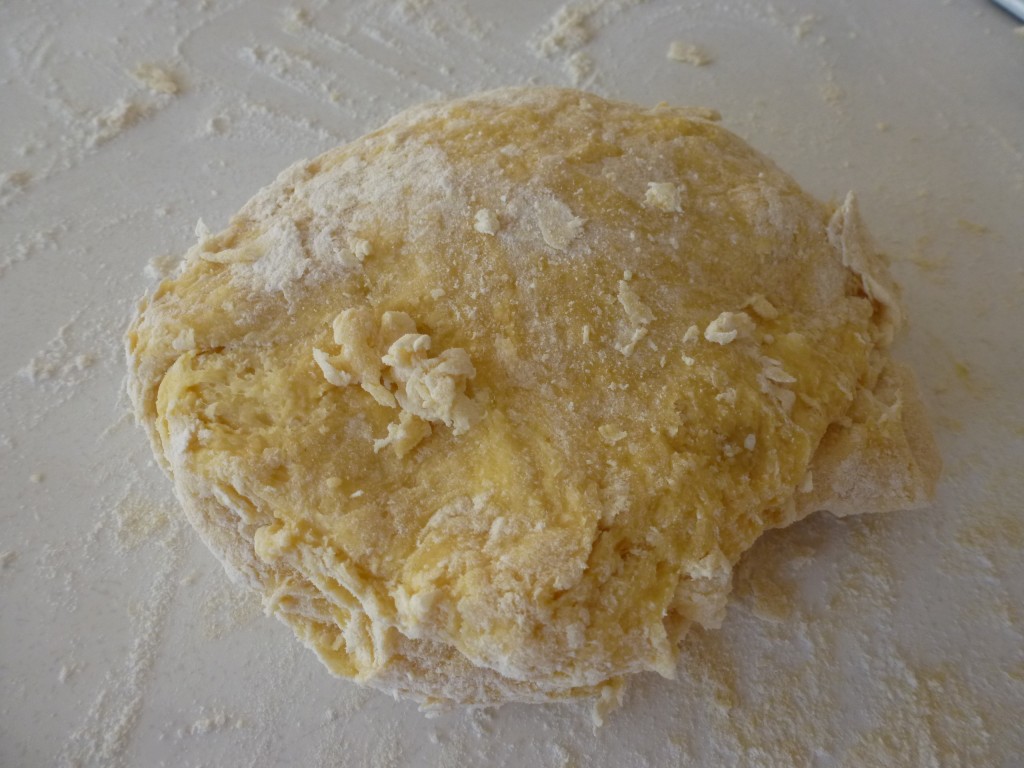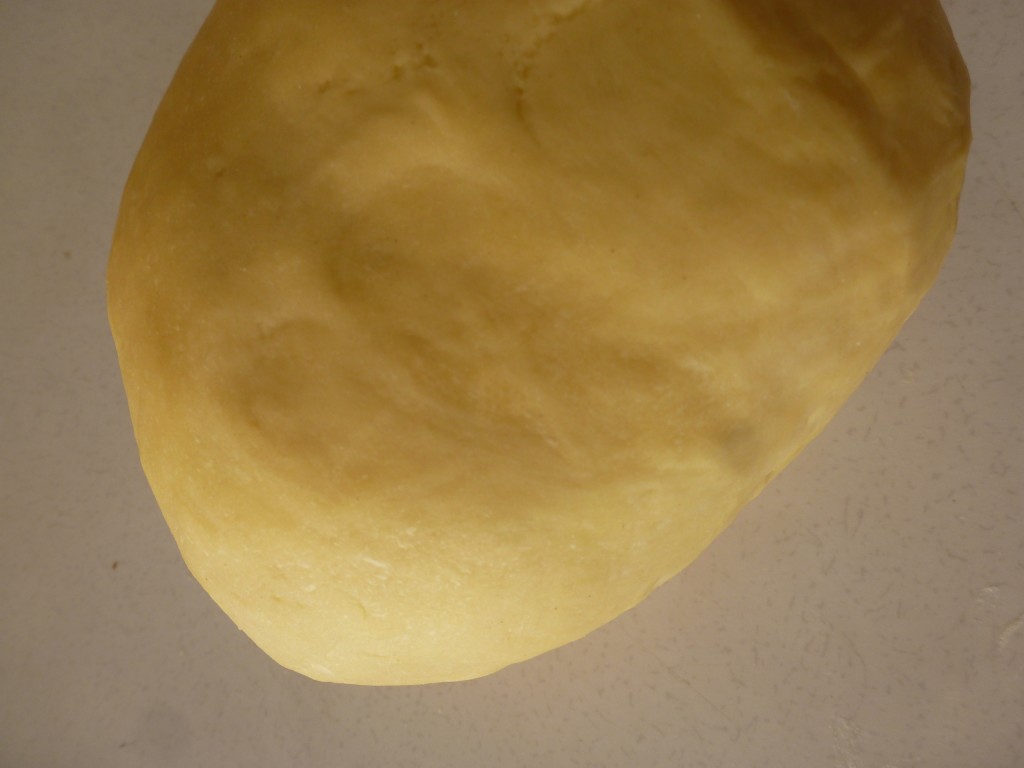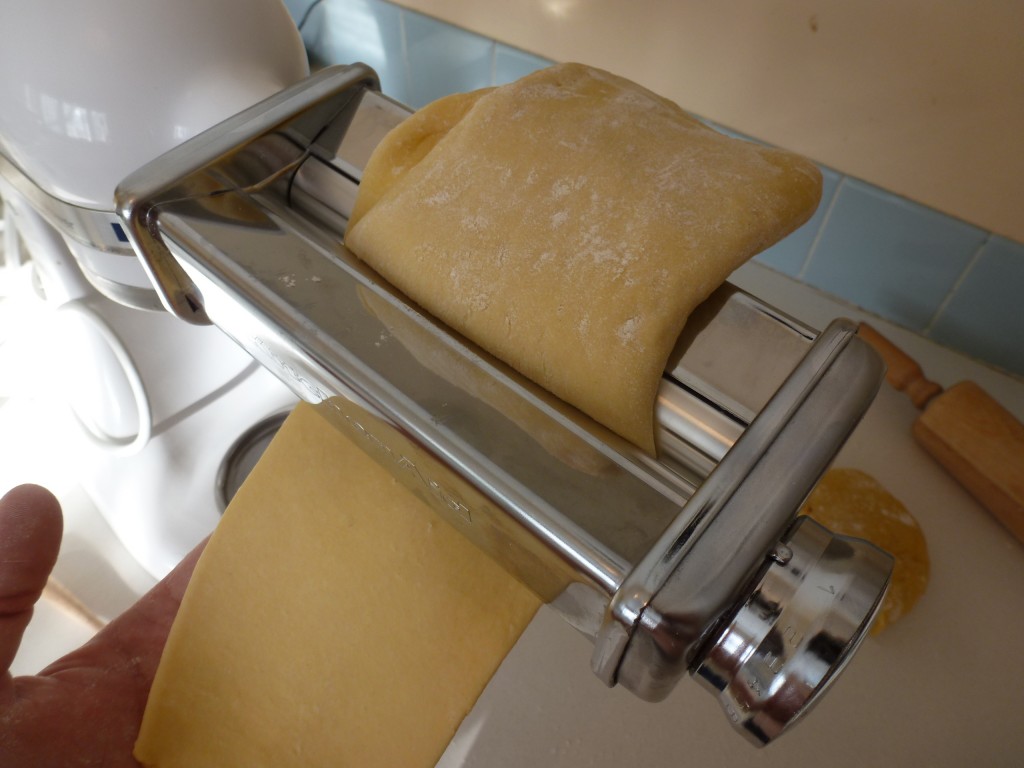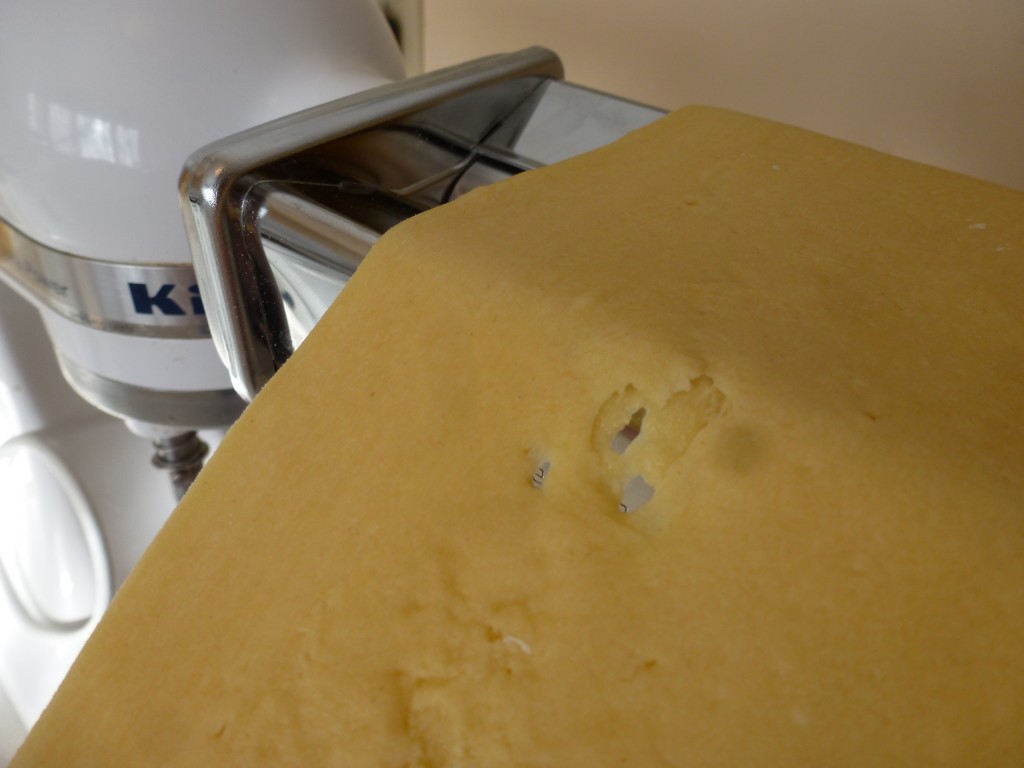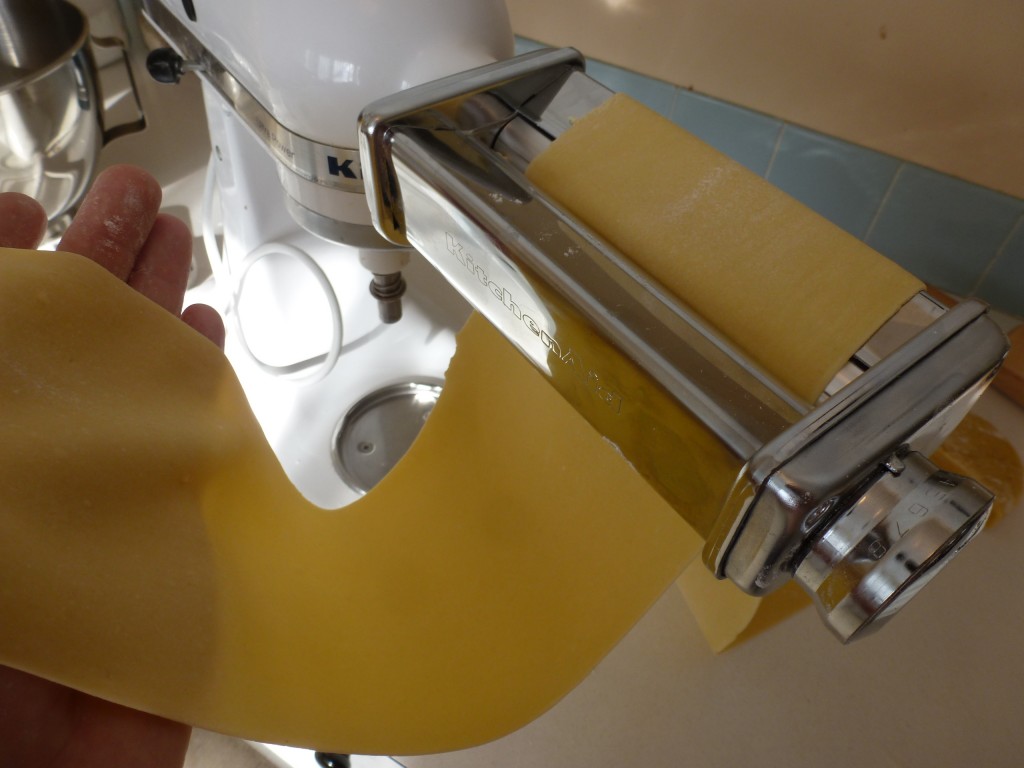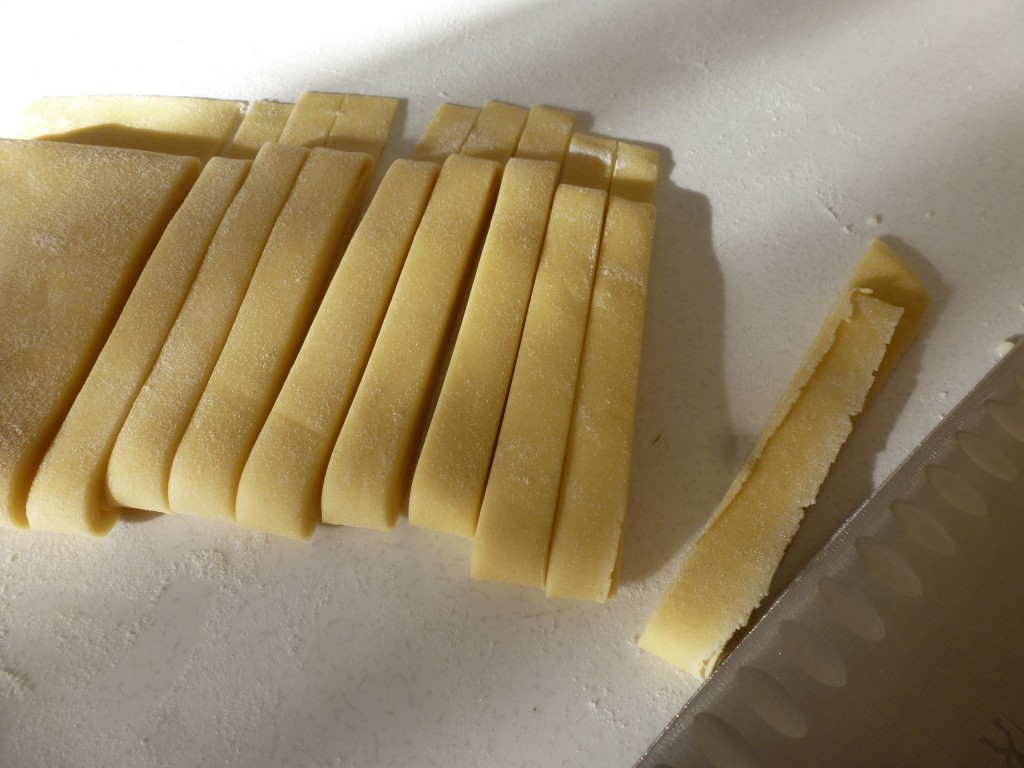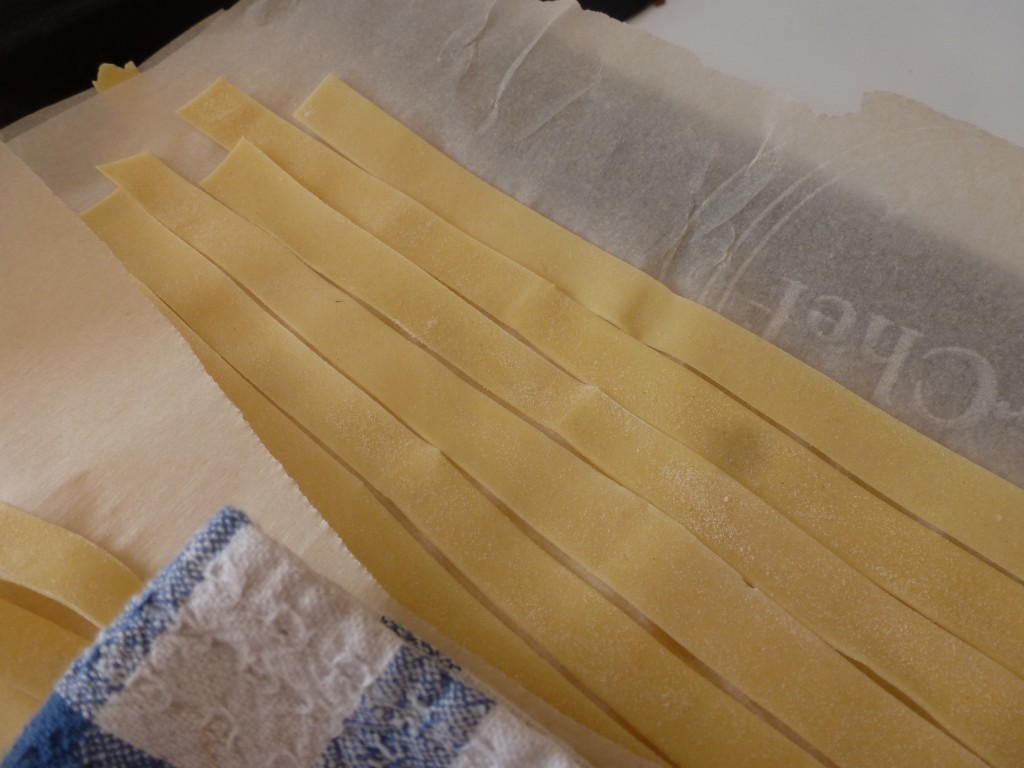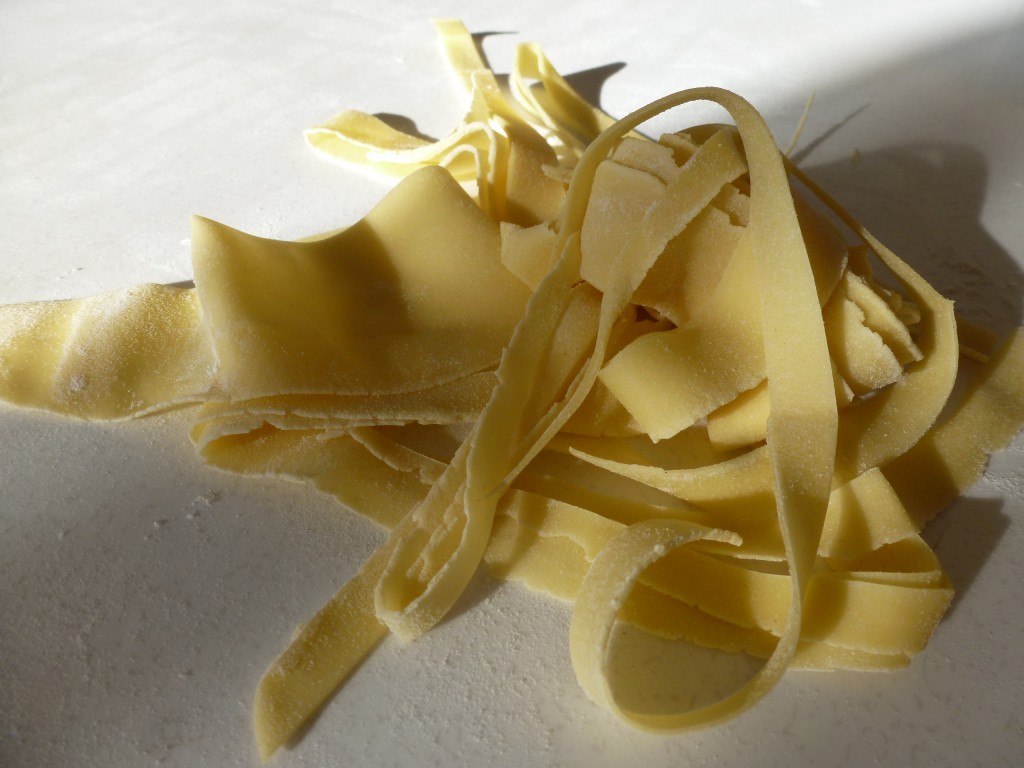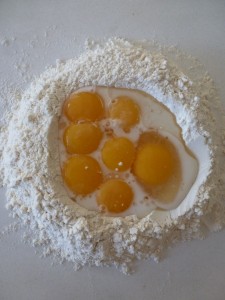 I call these egg noodles to distinguish them from the eggless, dried, commercially-produced pastas like spaghetti and macaroni.
I call these egg noodles to distinguish them from the eggless, dried, commercially-produced pastas like spaghetti and macaroni.
Let’s get to it.
You’ve no doubt seen nonnas or professional chefs mix pasta dough together right on the workbench by mounding up all the flour and making a well in the centre for all the liquid ingredients.
This is more than a parlour trick.
If you were to combine all the ingredients in a bowl at once and stir them together, you would find that they don’t come together; the dough will seem much too dry, and will stay crumbly and separate. It takes the flour a while to absorb the moisture in the eggs and milk. Slowly incorporating in this benchtop style gives the flour time to gelate.
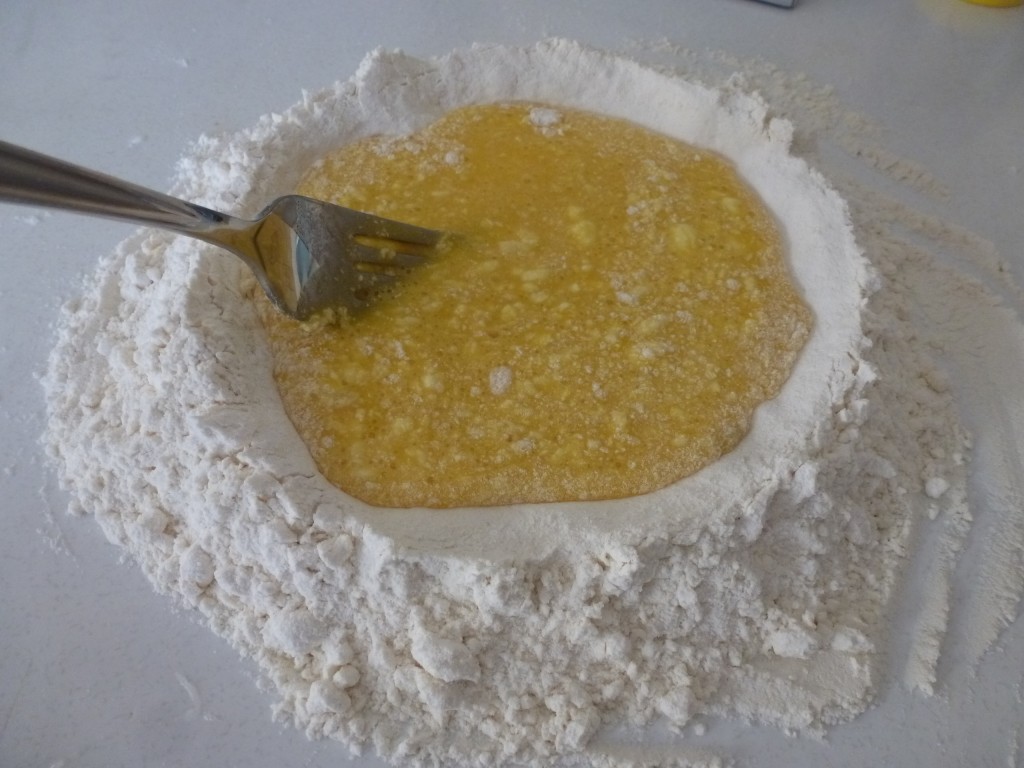 Once the dough comes together it will have a shaggy countenance, like so:
Once the dough comes together it will have a shaggy countenance, like so:
Now we knead the bejesus out of it. At least ten minutes by hand. The dough will become smooth, with a slightly tacky surface.
Wrap the dough well in plastic wrap to protect it from drying out and let it rest in the fridge for at least an hour. It can even sit there overnight.
Divide the dough in two. It’s time to roll. I use the pasta roller attachment for my Kitchenaid Mixer. There are several stand-alone pasta rollers available, too. The basic principle is this: the dough is passed between two rollers that are initially set quite wide, but are set successively closer between each pass of the the dough.
If the rollers turn without pulling dough through, the dough is too dry and floury. If the rollers tear the dough, as shown below, the dough is too moist and is sticking to the metal surfaces. Refold the dough, lightly dust it with flour, and start again.
Every cook has his or her own rolling method. The guy who taught me how to roll pasta would roll the dough to the thinnest roller-setting, then refold the sheet back into its original size and re-roll to desired thickness. The theory was that this made for very smooth dough with a persistent bite. I’ve never done any controlled experiments to evaluate this method and see if the extra passes really make a difference, but this guy makes the best pasta I’ve ever eaten, so this is now my preferred method.
The pasta machine comes with cutter-rollers. Cutting by hand it pretty simple, too, if you fold up the sheets of dough like so:
If you’re going to use the noodles within a couple of days, they’ll store well in the fridge. Lay them out on lightly floured sheets of parchment on a sheet pan. Cover with a clean dish towel to slow the loss of moisture.
Cutting the dough will result in scrap bits. I save these for chicken noodle soup.
The recipe:
Egg Noodles
Master Ratio – 1:2:4 whole eggs, yolks, flour (plus a bit more flour…)
Ingredients
- 260 g all-purpose flour
- 120 g egg yolks (about 6 large yolks)
- 60 g whole egg (1 large egg)
- 15 g whole milk
- 5 g canola oil
- a pinch of salt
